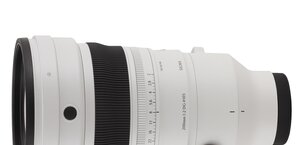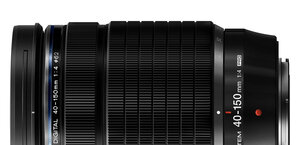Nikon Nikkor AF-S DX Micro 40 mm f/2.8G
3. Build quality
A photo below shows the tested lens positioned between the Nikkor AF 50 mm f/1.8D and the Sigma EX 1.4/30.
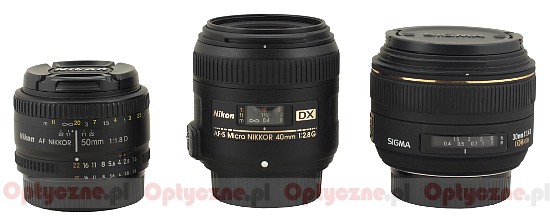 |
Please Support UsIf you enjoy our reviews and articles, and you want us to continue our work please, support our website by donating through PayPal. The funds are going to be used for paying our editorial team, renting servers, and equipping our testing studio; only that way we will be able to continue providing you interesting content for free. |
- - - - - - - - - - - - - - - - - - - - - - - - - - - - - - - - - - - - - - - - - - - - - - - -
The Nikkor 2.8/40 starts with a metal bayonet mount with contacts - it surrounds a rear element which is 21 mm in diameter. The element is not hidden deeply inside the casing but is situated close to the mount plane.
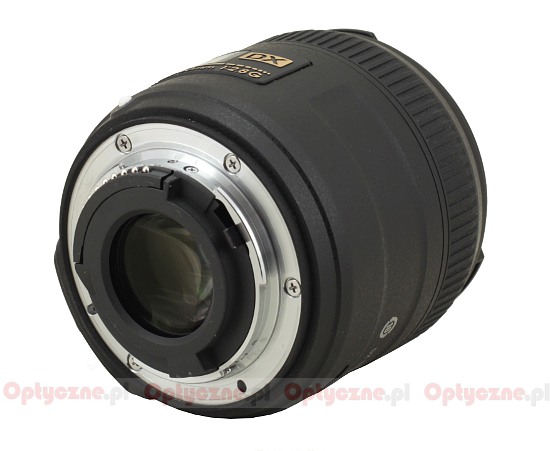 |
Right behind the mount, already on the proper casing padded with black plastic, we see two switches on the left. The first – M/A-M - is used to set a mode of focusing mechanism. The second is a focus limiter – we can choose from the FULL option and the limited range from 0.2 of a meter to infinity.
 |
The next part is a plate with the name of the lens and its parameters which surrounds a clear distance scale. The scale is expressed in meters and feet and, additionally, has a reproduction ratio. It’s a pity, though, that the producer didn’t decide to put a depth of field scale as well – when it comes to a fixed-focal lens such an element comes always in handy.
On the opposite side of the lens we also find a serial number, another inscription with the name of the company and some other parameters along with the info that the lens was made in China.
Next there is a manual focus ring. It is 16 mm wide and ribbed. Its work is quite smooth but when you move it you can hear a suspicious grating coming from the inside of the lens. What’s more, the lens is not free from a standard flaw characterizing the cheapest Nikkor devices – a bit of slack when you try to set focus for the first time. You move the ring and at first it turns but without any effect on the distance scale. It makes precise settings rather difficult. Running through the whole distance scale takes a turn through 170 degrees – a quite good result. But it should be emphasized it is guaranteed only for the macro mode. Running from infinity to 0.4 of a meter takes a turn through just 20 degrees so in this range you can’t think about precise manual focus settings.
At the end of the proper casing of the lens you can find a filter thread. When you pass to the minimum focus an inner tube extends from the barrel with the front element system surrounded by a non-rotating filter thread, 52 mm in diameter. Fully extended, the tube is as long as18 mm . It is made of plastics and it doesn’t look very solid. Even a brand new specimen of the lens, and such was sent to our editorial office, already has some lateral play. It can be felt if you shake the lens just slightly; you can also hear how different parts are clanking inside, hitting each other.
When the focus is set at infinity the front element, which is 21 mm wide, is hidden about 1.5 cm inside the barrel. When you pass to 1:1 reproduction ratio the element moves and goes higher, being in the end almost on the same level as the outer edge of the lens. The objects which you want to photograph in 1:1 are situated about 4 cm from the front element then.
The Nikkor 2.8/40 consists of 9 element set in 7 groups. The producer doesn’t boast of using any special elements. Inside you can also find an aperture with seven diaphragm blades which can be closed to the value of f/22.
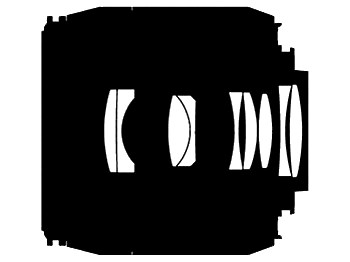
The buyer gets two caps, a hood and a soft pouch. At that price point such a standard accessory kit is quite decent.
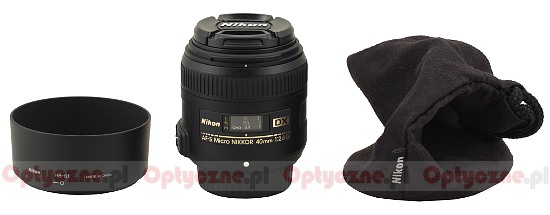 |




